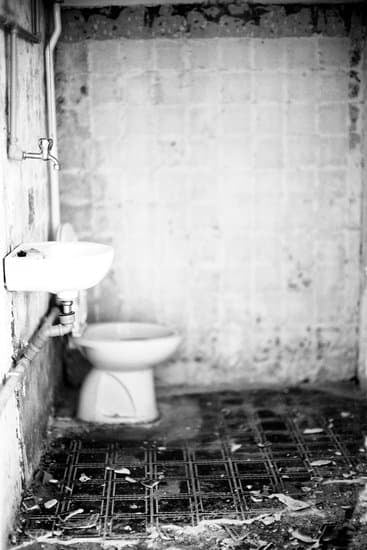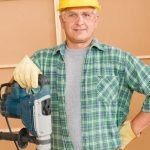Are you wondering how to depreciate home improvements for childcare taxes? Many homeowners who make improvements to their homes to accommodate childcare needs may not realize that they can actually take advantage of tax benefits through depreciation. Understanding the importance of depreciating home improvements for childcare taxes is crucial in maximizing your potential savings and deductions.
When it comes to claiming childcare tax benefits, knowing the basics of home improvements and depreciation is key. This includes understanding what types of home improvements are eligible for deductions, as well as how to calculate and document the depreciation for these improvements. With the right knowledge and guidance, you can navigate the process with confidence and ensure that you are maximizing your tax savings.
In this article, we will explore the ins and outs of depreciating home improvements for childcare taxes. From the basics of understanding depreciation to the documentation and record-keeping required, we will provide valuable insights on how to make the most of this tax benefit.
Additionally, we will discuss common mistakes to avoid and offer tips for maximizing your childcare tax benefits through home improvements. Whether you are a homeowner or a professional in the childcare industry, this guide will help you understand when it’s necessary to consult a tax advisor for further assistance.
The Basics of Home Improvements and Depreciation
Understanding the basics of home improvements and depreciation is crucial for maximizing childcare tax benefits. When it comes to providing childcare in your home, making certain home improvements can qualify you for tax deductions. However, it’s essential to understand the basics of depreciation and how it applies to these improvements.
To start, here are some key points to understand:
- Depreciation is a tax deduction that allows you to recover the cost of certain assets over time. This includes property improvements related to providing childcare services.
- The Modified Accelerated Cost Recovery System (MACRS) is used by the IRS to calculate depreciation for most types of property. It provides specific guidelines for determining the depreciable life of different types of assets, including home improvements.
- Home improvements must meet specific criteria set by the IRS in order to qualify for depreciation as part of childcare tax deductions.
Understanding these basics will help ensure that you make informed decisions when making home improvements for your childcare business, and accurately calculate and claim the associated depreciation for tax purposes.
Eligible Home Improvements for Childcare Tax Deductions
Qualifying Home Improvements
When it comes to claiming childcare tax deductions, not all home improvements are eligible. The IRS has specific guidelines regarding which home improvements can be depreciated for childcare tax purposes. Qualifying home improvements typically include renovations or modifications that directly benefit the daycare or childcare business. This may include adding a dedicated play area, renovating bathrooms to accommodate children, installing safety features such as gates or fences, or making structural changes to create separate childcare spaces.
Home Safety and Security Upgrades
In addition to renovations that directly impact the childcare business, certain safety and security upgrades in the home may also qualify for depreciation. These could include installing a security system, smoke detectors, carbon monoxide detectors, childproofing measures like safety locks on cabinets and doors, and other improvements that enhance the safety and well-being of the children in your care.
Energy Efficiency Improvements
Another category of home improvements that can be depreciated for childcare tax deductions is those related to energy efficiency. Upgrades such as installing energy-efficient windows, doors, insulation, HVAC systems, solar panels, or energy-efficient lighting can potentially qualify for depreciation. It’s important to keep detailed records and receipts for these improvements to support your claim during an IRS audit.
By identifying and documenting eligible home improvements for childcare tax deductions, you can maximize the financial benefits of operating a daycare or providing childcare services from your home. Properly documenting these improvements and seeking professional guidance when needed will ensure compliance with IRS regulations while optimizing your tax benefits.
Calculating Depreciation for Home Improvements
Depreciating home improvements for childcare taxes involves a systematic process to determine the value of the improvements over time, as well as their eligibility for tax deductions. Calculating depreciation for home improvements requires understanding the cost basis, useful life, and depreciation method. Here are the essential steps to calculate depreciation for home improvements:
1. Determine the cost basis: To calculate depreciation, you need to determine the initial cost of the home improvement. This includes all expenses related to the improvement, such as materials, labor, and any additional costs incurred during the renovation.
2. Identify the useful life: The useful life is an estimate of how long the improvement will last before it needs to be replaced or renovated again. The IRS provides guidelines for different types of property and improvements that can help in determining their useful lives.
3. Choose a depreciation method: There are different depreciation methods allowed by the IRS, such as straight-line depreciation, double-declining balance (DDB) method, or alternative depreciation system (ADS). Each method has its own rules and calculations for depreciating assets and improvements.
By following these steps, you can accurately calculate the depreciation for home improvements and ensure that you are maximizing your childcare tax benefits.
It’s important to note that calculating depreciation for home improvements can be complex and may require professional assistance from a tax advisor or accountant who is knowledgeable about childcare tax deductions and credits. They can provide guidance on which depreciation method is most beneficial for your specific situation and ensure compliance with IRS regulations.
Documentation and Record-Keeping for Depreciating Home Improvements
When it comes to depreciating home improvements for childcare taxes, documentation and record-keeping play a crucial role in ensuring that you receive the tax benefits you are entitled to. Keeping detailed records of all home improvements made for the purpose of childcare is essential for accurately calculating depreciation and claiming deductions. It is important to maintain organized and comprehensive documentation throughout the time you are providing childcare services in your home.
Documentation should include receipts, invoices, and contracts for any expenses related to home improvements. This includes materials, labor costs, and any professional services hired for the renovations or additions made to your home. It is also important to keep records of any permits obtained for the home improvements, as well as before-and-after photos of the areas that were enhanced or modified for childcare purposes.
In addition to financial documentation, it is also beneficial to keep a log of the time spent using specific areas of your home for childcare activities. This can help support your claims when calculating depreciation for those specific spaces. By maintaining meticulous records, you can confidently claim the depreciation on eligible home improvements when filing your taxes and minimize the risk of being audited by the IRS.
Claiming Childcare Tax Credits and Deductions
When it comes to claiming childcare tax credits and deductions, it’s essential to understand the specific requirements and guidelines set by the Internal Revenue Service (IRS). To be eligible for these tax benefits, the home improvements made must directly relate to providing a safe and conducive environment for child care. Some common examples of qualifying home improvements include installing safety gates, childproof locks, energy-efficient windows, or creating a dedicated play area for children.
Before claiming childcare tax credits and deductions for home improvements, it’s crucial to ensure that all expenses are well-documented and supported by receipts or invoices. In addition to this, maintaining detailed records of the date each improvement was made, the cost incurred, and any professional services utilized will also be necessary for successful claims. This level of documentation is vital in case of an IRS audit or if additional details are requested when filing your taxes.
It’s important to note that even if some home improvements do not directly qualify for child care tax deductions or credits, they may still be eligible for other property-related tax benefits. For instance, if an improvement contributes to increasing the energy efficiency or overall value of your property, you may still be able to claim related tax credits or deductions not specifically designated for childcare purposes.
| Home Improvement | Tax Benefits |
|---|---|
| Installing safety gates | Childcare tax deductions |
| Energy-efficient windows | Property-related tax credits |
| Dedicated play area for children | Childcare tax credits |
Common Mistakes to Avoid When Depreciating Home Improvements for Childcare Taxes
Not Fully Understanding IRS Guidelines
One of the most common mistakes when depreciating home improvements for childcare taxes is not having a complete understanding of the guidelines set by the IRS. It’s important to carefully review the IRS Publication 946, which provides detailed information on how to depreciate property, including home improvements. Failing to adhere to these guidelines can result in errors in claiming deductions and credits, leading to potential audits or penalties.
Overlooking Eligible Home Improvements
Another mistake to avoid is overlooking eligible home improvements that qualify for depreciation. Some homeowners may only consider major renovations or additions as eligible, but smaller, more routine improvements can also be included. This can include HVAC upgrades, security systems, or even installing energy-efficient windows and doors. It’s important not to underestimate the potential tax benefits from these smaller improvements when calculating depreciation.
Underestimating Record-Keeping Importance
In the process of depreciating home improvements for childcare taxes, many taxpayers make the mistake of underestimating the importance of thorough documentation and record-keeping. Proper records of all expenses related to home improvements are crucial for accurately calculating depreciation and supporting any claims made on tax returns. Failure to keep organized records can lead to challenges during an audit or when substantiating deductions and credits claimed.
By being aware of these common mistakes and taking proactive measures to avoid them, homeowners can maximize their childcare tax benefits through proper depreciation of home improvements. It’s essential to stay informed about IRS guidelines, identify all eligible home improvements, and maintain meticulous records throughout the process.
Tips for Maximizing Childcare Tax Benefits Through Home Improvements
When it comes to maximizing childcare tax benefits through home improvements, there are several important tips to keep in mind. First and foremost, it’s essential to understand which home improvements are eligible for childcare tax deductions. Some common examples of eligible improvements include adding a separate entrance to your home for the daycare area, installing security measures, such as fencing and alarms, and making structural changes to create dedicated childcare spaces.
In addition to understanding eligible improvements, it’s crucial to keep detailed documentation and records of all home improvement expenses. This includes receipts, invoices, and any relevant contracts or agreements with contractors. Maintaining thorough records will not only help you accurately calculate depreciation but also provide evidence in case of an audit by the IRS.
Another key tip for maximizing childcare tax benefits through home improvements is to seek professional help when needed. Consulting a tax advisor or accountant who specializes in childcare tax deductions can provide valuable insight into complex tax rules and regulations. They can also help you navigate any potential pitfalls or mistakes when claiming depreciation for home improvements.
By following these tips and staying informed about current tax laws and regulations, you can effectively maximize childcare tax benefits through eligible home improvements. Remember that every family’s situation is unique, so seeking professional advice tailored to your specific circumstances can make a significant difference in optimizing your childcare tax deductions.
| Tips | Benefits |
|---|---|
| Understand eligible improvements | Maximize deductions |
| Keep detailed documentation | Evidence for audits |
| Seek professional help | Navigate complex rules |
Seeking Professional Help
In conclusion, while it is possible to navigate the process of depreciating home improvements for childcare taxes on your own, seeking professional help from a tax advisor can provide numerous benefits. A tax advisor can ensure that you are taking full advantage of all available deductions and credits, as well as help you avoid costly mistakes. Additionally, they can offer personalized guidance based on your specific financial situation and the unique tax laws in your area.
When deciding whether to consult a tax advisor for childcare tax depreciation benefits, consider the complexity of your home improvements and financial situation. If you have made extensive renovations or are unsure about which improvements are eligible for depreciation, a tax advisor can provide clarity and peace of mind. Furthermore, if you are unfamiliar with tax laws or find the process overwhelming, a professional can simplify the process and potentially save you money in the long run.
Ultimately, maximizing childcare tax benefits through home improvements requires careful consideration and attention to detail. Whether you choose to navigate the process independently or seek professional assistance, taking advantage of available deductions and credits can lead to significant savings. By staying informed about eligible home improvements, properly documenting expenses, and consulting with a tax advisor when necessary, you can make the most of childcare tax benefits while providing a safe and comfortable environment for your family.
Frequently Asked Questions
Can I Depreciate Home Improvements?
Yes, it is possible to depreciate home improvements if they meet certain criteria set by the IRS. Generally, home improvements that add value to the property or prolong its useful life can be depreciated over time. It’s essential to keep detailed records of the costs and dates of the improvements for accurate depreciation calculations.
What Childcare Expenses Are Tax Deductible?
Childcare expenses that are tax deductible typically include costs associated with care provided by a licensed daycare center, a babysitter or nanny, after-school programs, and day camps. Additionally, expenses related to transportation to and from childcare facilities may also be eligible for tax deductions. However, it’s important to review IRS guidelines and qualifications before claiming these expenses.
Can You Depreciate Property Improvements?
Property improvements made to income-producing properties such as rental units or commercial buildings can usually be depreciated over time. These improvements could include renovations, additions, or upgrades that extend the property’s useful life or increase its value.
However, not all property improvements are eligible for depreciation, so it’s crucial to consult with a tax professional or refer to IRS guidelines for specific rules and regulations.

I’m thrilled to have you here as a part of the Remodeling Top community. This is where my journey as an architect and remodeling enthusiast intersects with your passion for transforming houses into dream homes.





